In 301 C.E. Armenia became the first kingdom to adopt Christianity as the religion of the realm. This history has endowed the country with some spectacularly beautiful monasteries.
One of the oldest is Khor Virap, which played an important part in the country’s conversion.
St. Gregory the Illuminator, the patron saint and first head of the Armenian Apostolic Church,
was imprisoned on the site for 13 years by King Tiridates III, whom he eventually converted.
‘Khor Virap’ means ‘deep pit’ and it refers to the underground dungeon where the Saint was incarcerated –
which is said to be below this chapel.
The other major chapel on the site was first built in the 7th century of the Common Era
but has been re-built many times since then.
It is one of the most visited pilgrimage sites in Armenia.
Noravank (or ‘New Monastery’) is about 122 km from Yerevan, Armenia’s capital. The road runs through a spectacularly austere landscape, with vast slabs of geological time being laid bare to the eye, as if by the incisions of a titanic scalpel.
The monastery is situated high up a slope and it stands guard over the defile of the Amaghu River.
The Surb Astvatsatsin (or Holy Mother of God Church) dominates the complex.
Nearby is a more modest but equally intriguing church, Surb Karapet.
The picturesque Geghard monastery is said to have been founded by St Gregory himself.
The name means ‘spear’ and it refers to the weapon that is said to have pierced Jesus Christ during the Crucifixion.
The relic is stored in the monastery.
Hidden inside the vaulted interior
are some curious motifs.
Around the Church, there are trees with fluttering prayer ribbons.
They reminded me of a Tibetan-Buddhist monastery
I had visited in Yunnan, China, a couple of years ago.
It was a reminder that there are certain continuities and connections that extend through the entire Central Asian landmass – and of the fact that Armenians had established trading posts in Lhasa at least as early as the 12th century.
Not far from Geghard is the village of Garni,
where an elegant Hellenistic temple maintains a lonely vigil over the gorge of a rushing river.
Sadly I found no trace of an important phase of Armenia’s pre-Christian past – the centuries during which the country was Zoroastrian. But Zoroastrianism is a curiously tenacious faith, and it has a way of leaving traces of itself in unexpected places:
as for example in the name of this hair-dressing salon in Yerevan.
The name invokes the Zoroastrian angel of the waters (not to speak of the ship Anahita in River of Smoke).

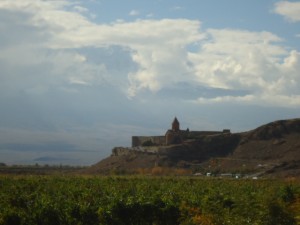


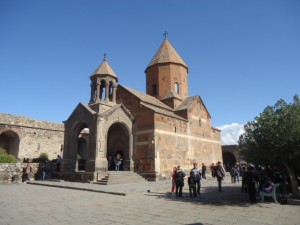
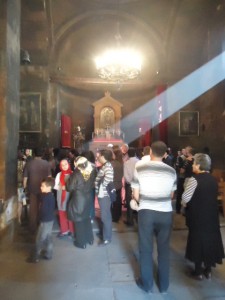

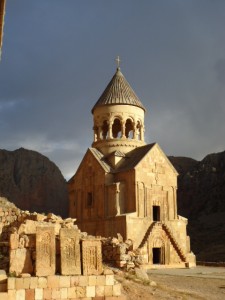
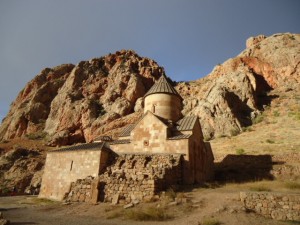
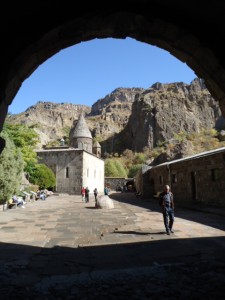
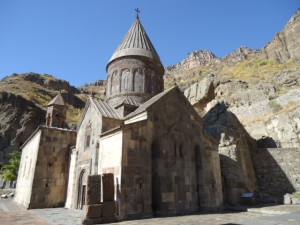
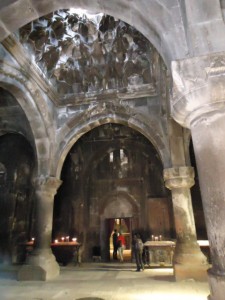
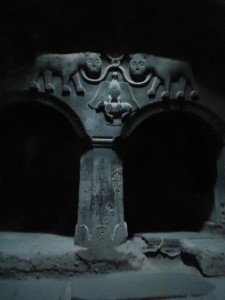

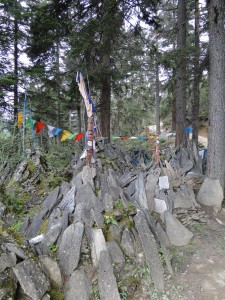

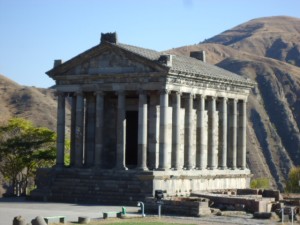

i like your comment, “But Zoroastrianism is a curiously tenacious faith, and it has a way of leaving traces of itself in unexpected places”
so true., it might get erased as a religion but its influence usually is quite persistent..
Mr. Ghosh, u missed out on this curious bit of Hindu history in Armenia. I read it in Frontline some time back. Here is the web version:
http://www.frontlineonnet.com/fl2315/stories/20060811000106600.htm
thanks so much! this is indeed a really interesting story.
best
Amitav
sir, Am Faris from Kerala, and i have no words for you to say that ” am an avid fan of you”… i do keep buying your books. when i was done with ‘poppies’, the tranquilizer effect of poppies yet daunts me and now picking each words of ‘smoke’ … you keep injecting me the venom of reading and am reading here collecting each penny to buy your.. iam looking forward to meet you… keep penning books, please , -please …
thanks very much Faris!
A
More photos and information on monasteries in Armenia
http://sacredsites.com/europe/armenia/sacred_sites_of_armenia.html